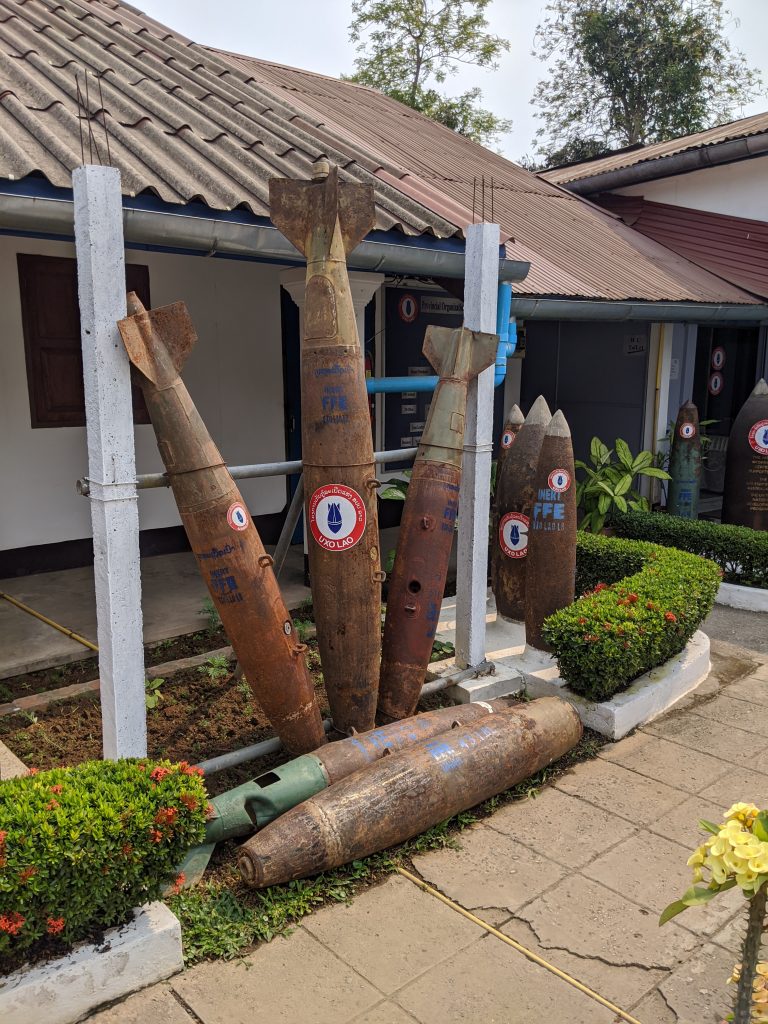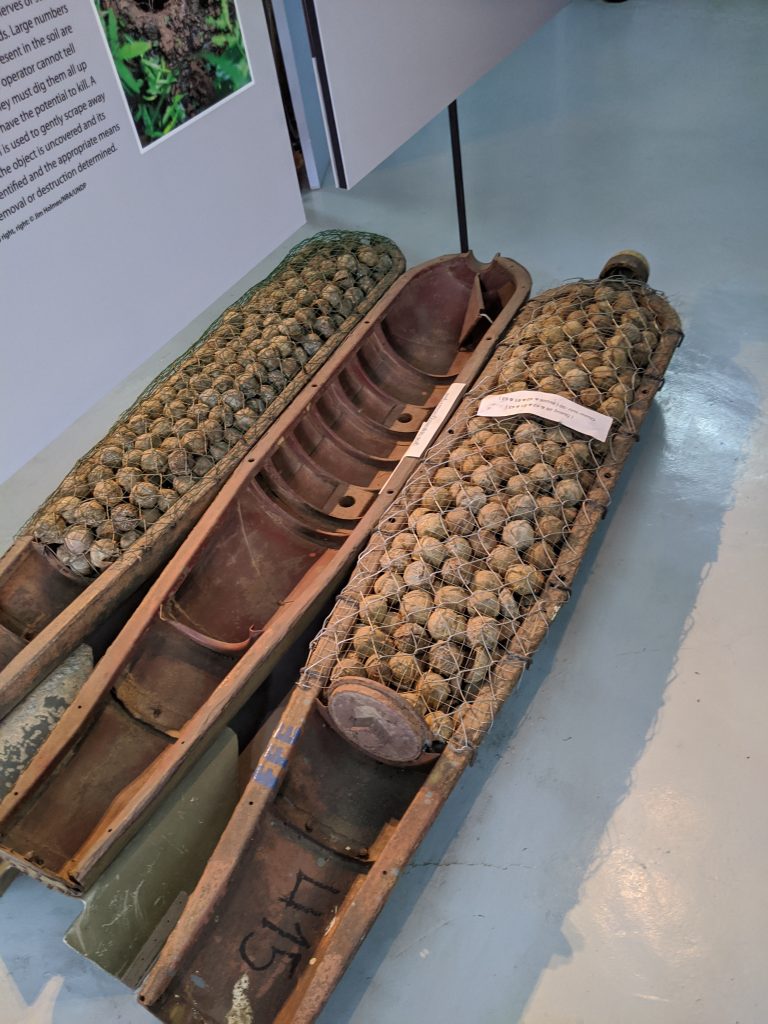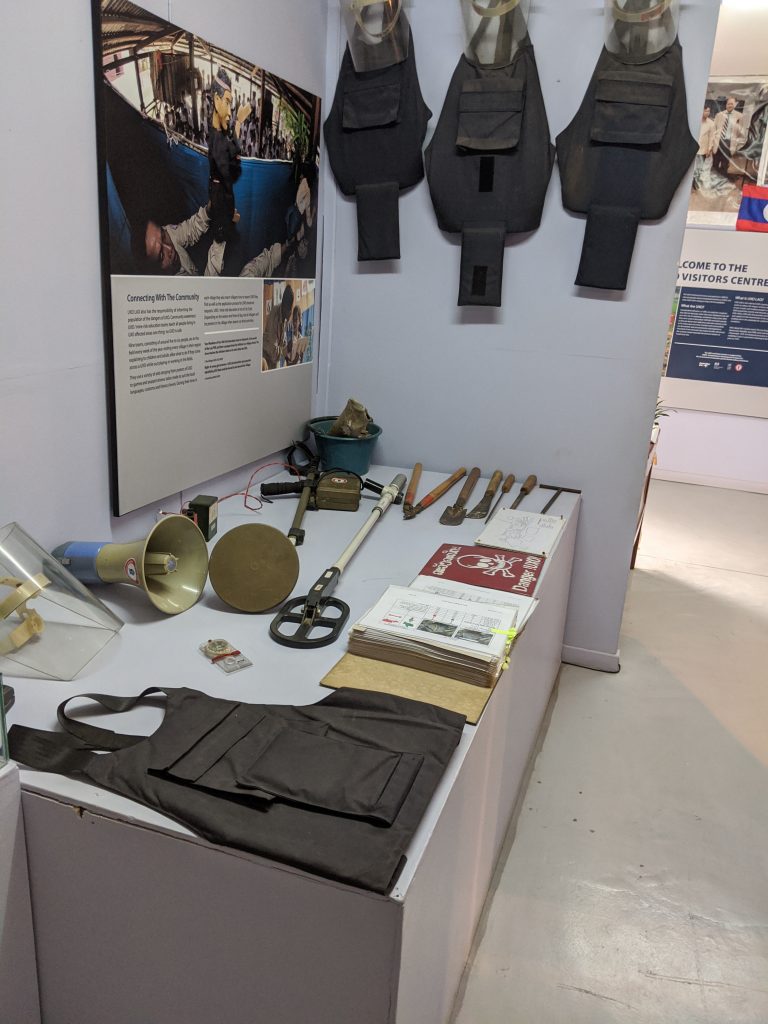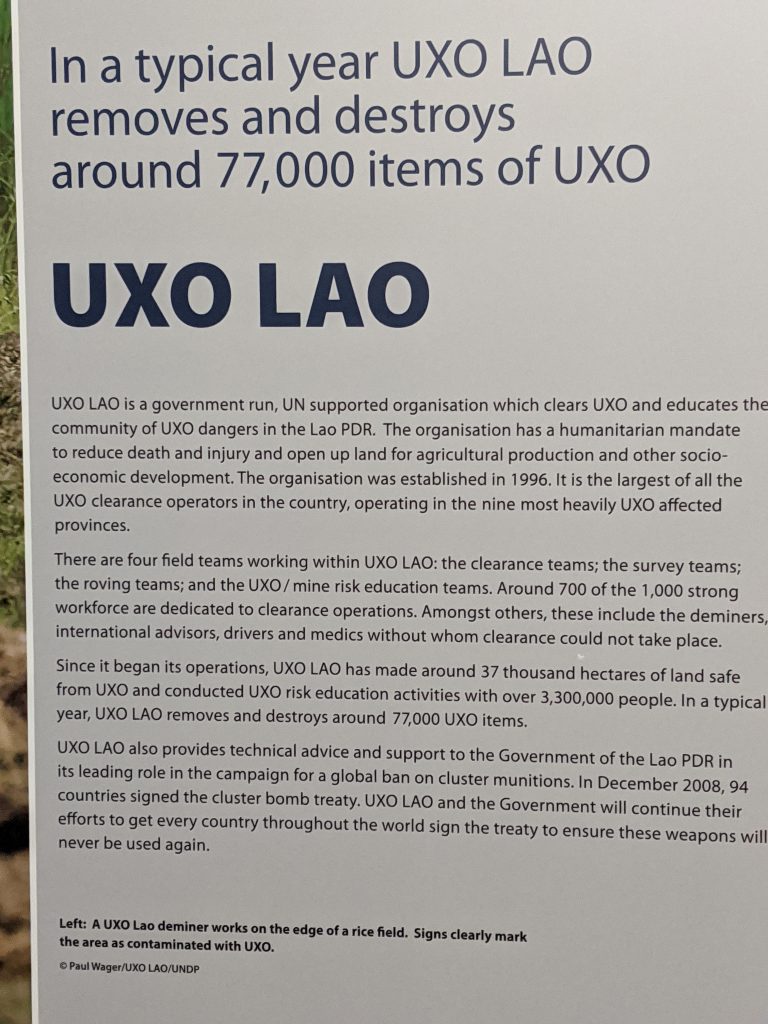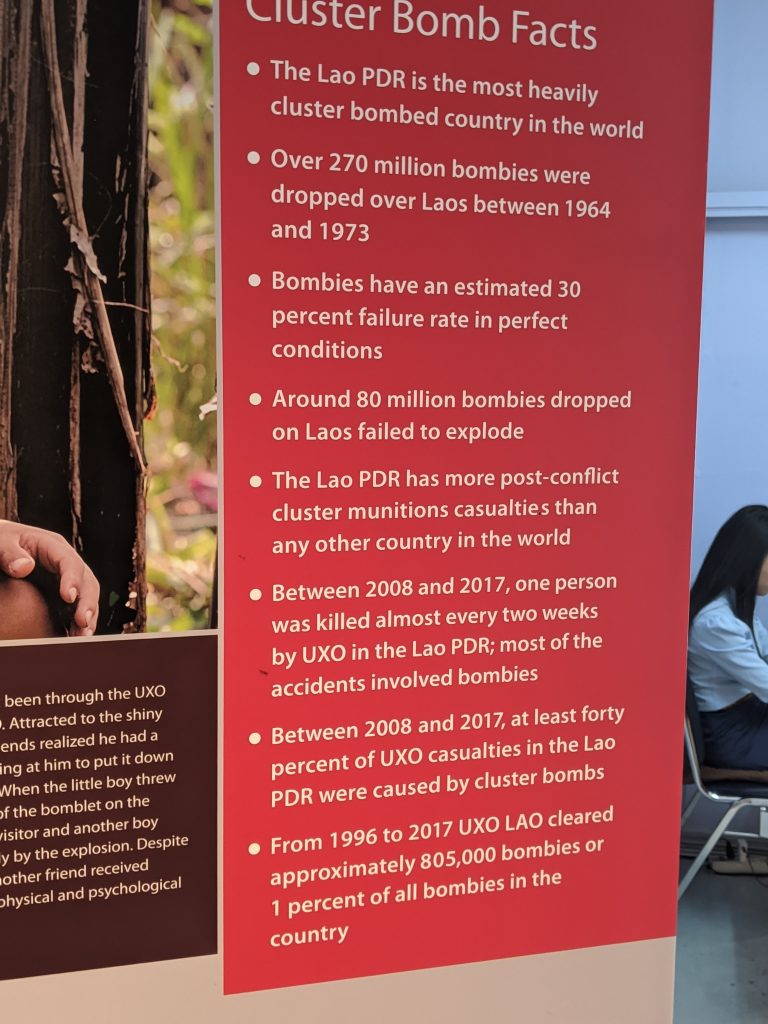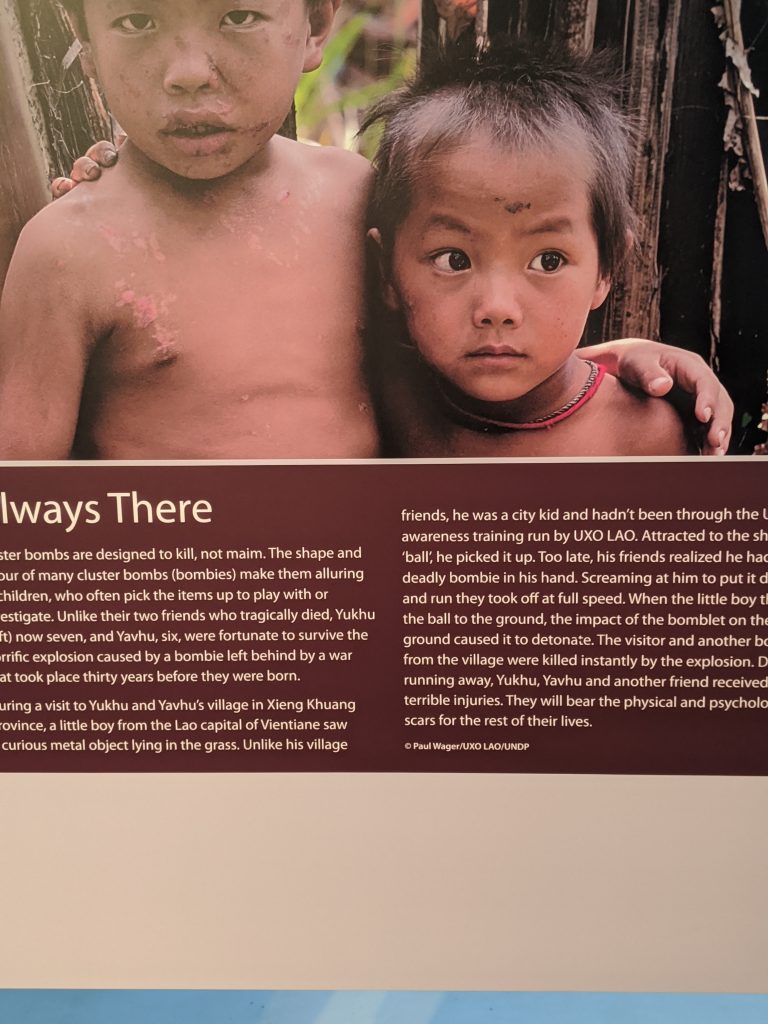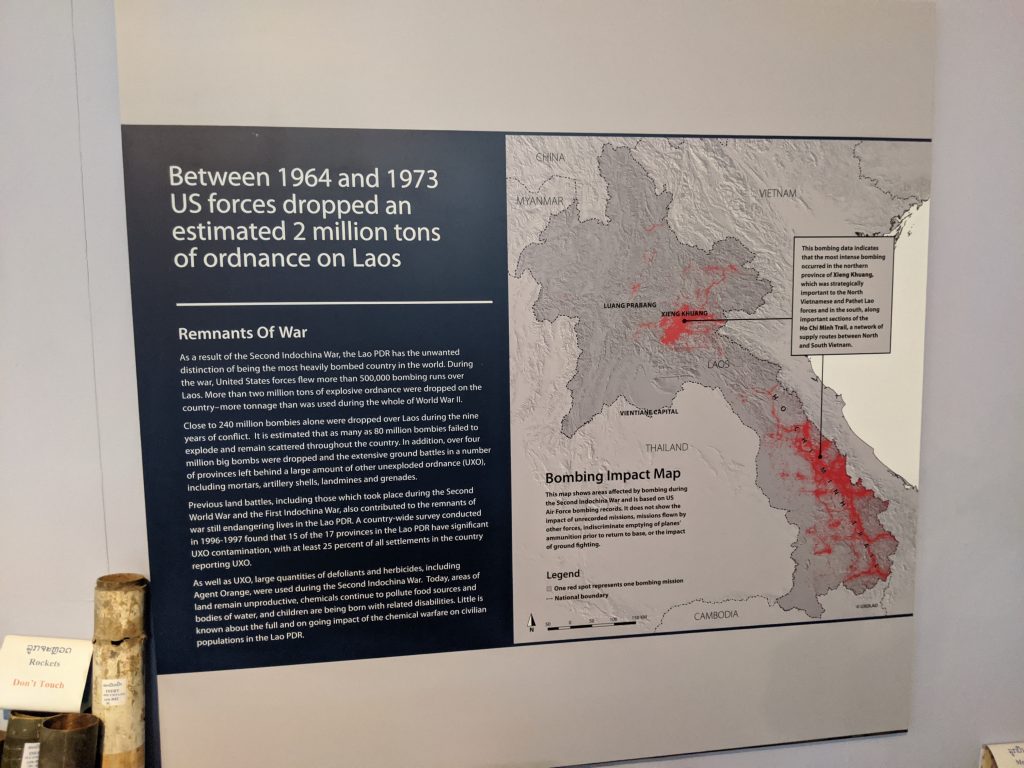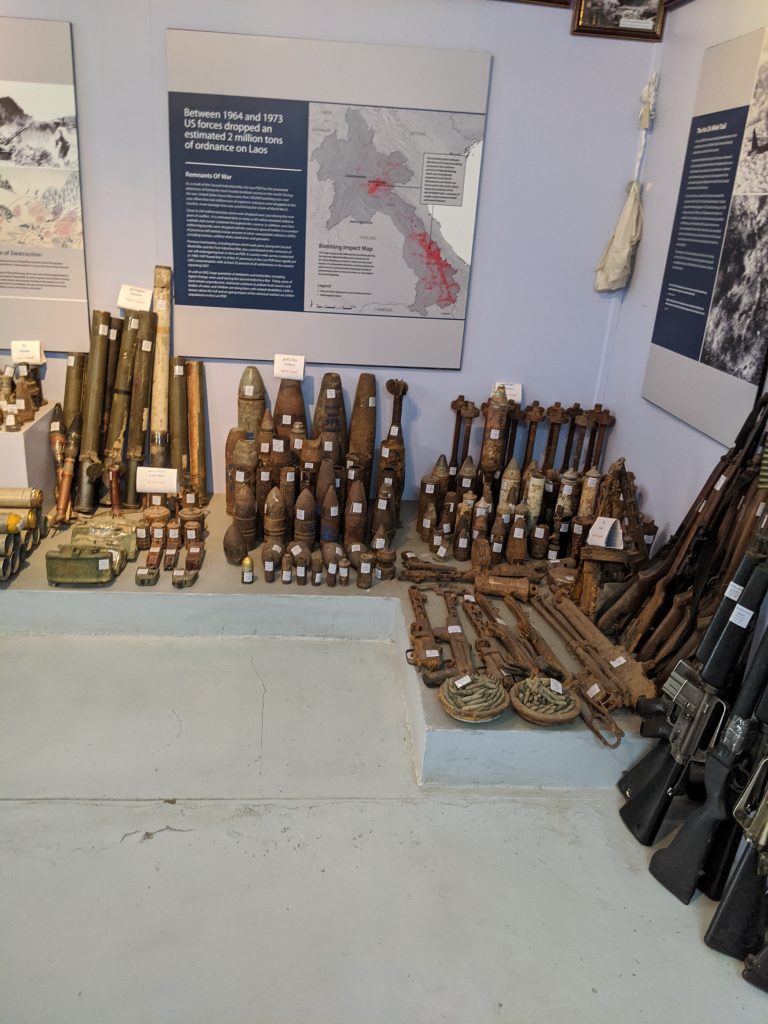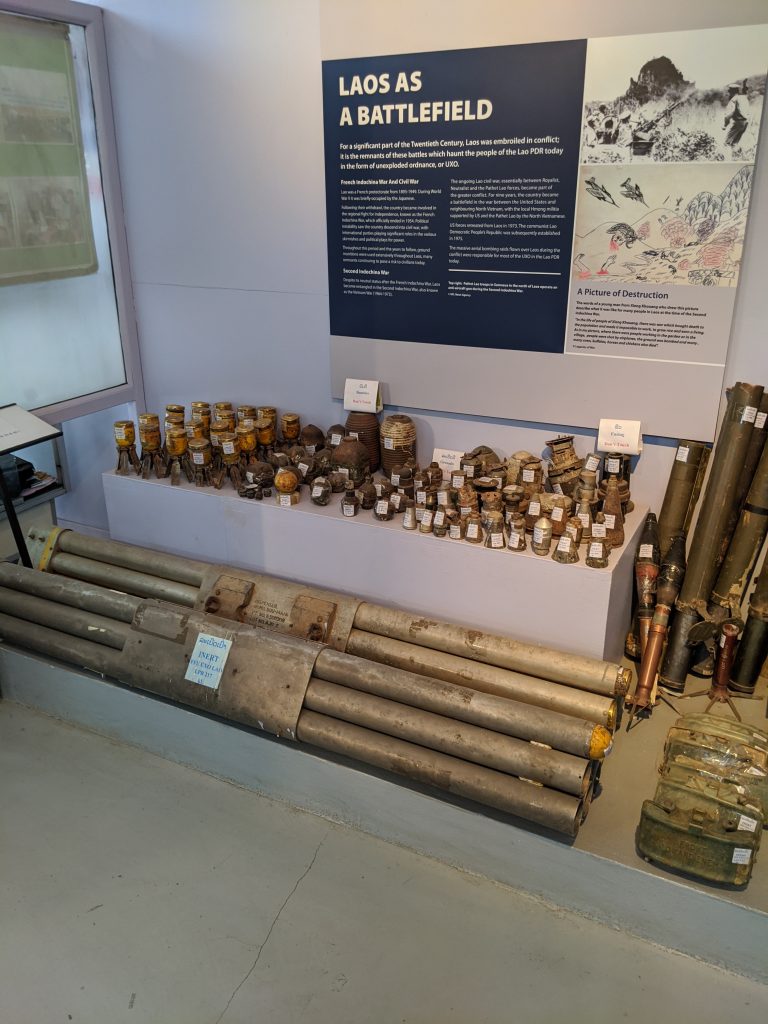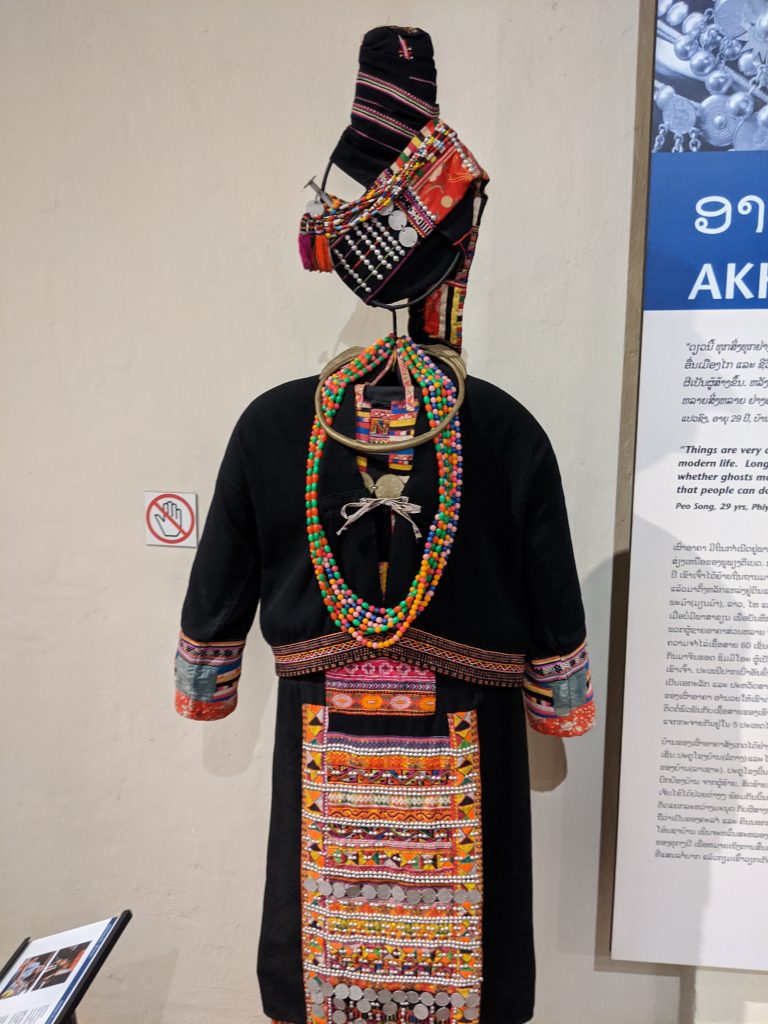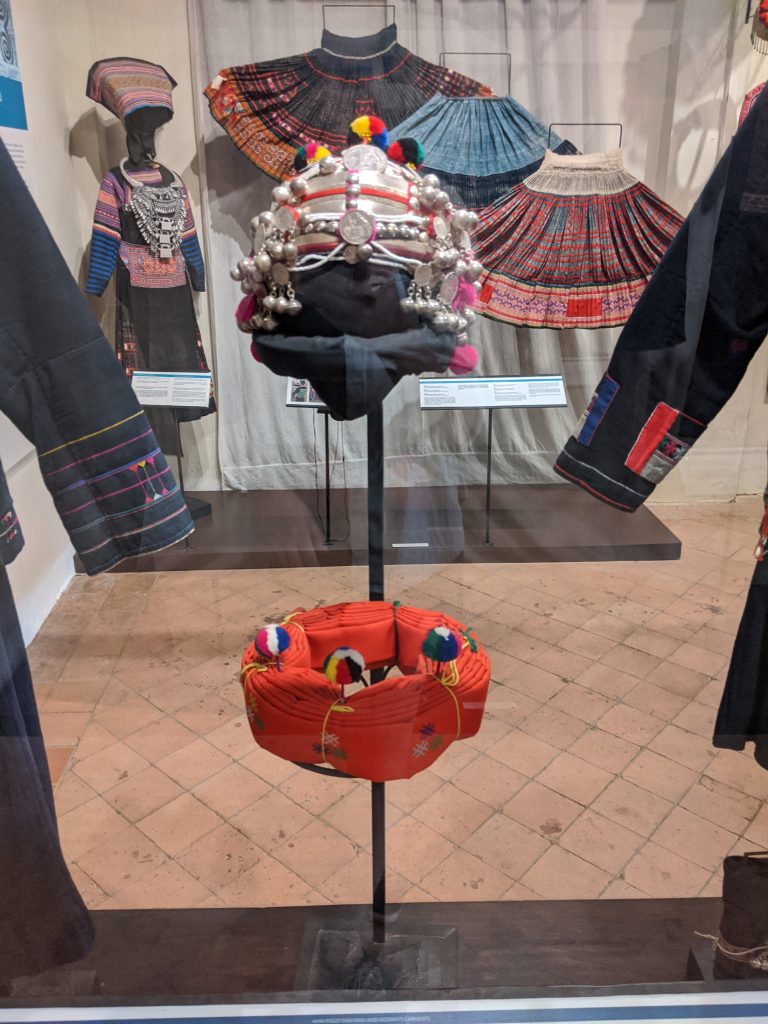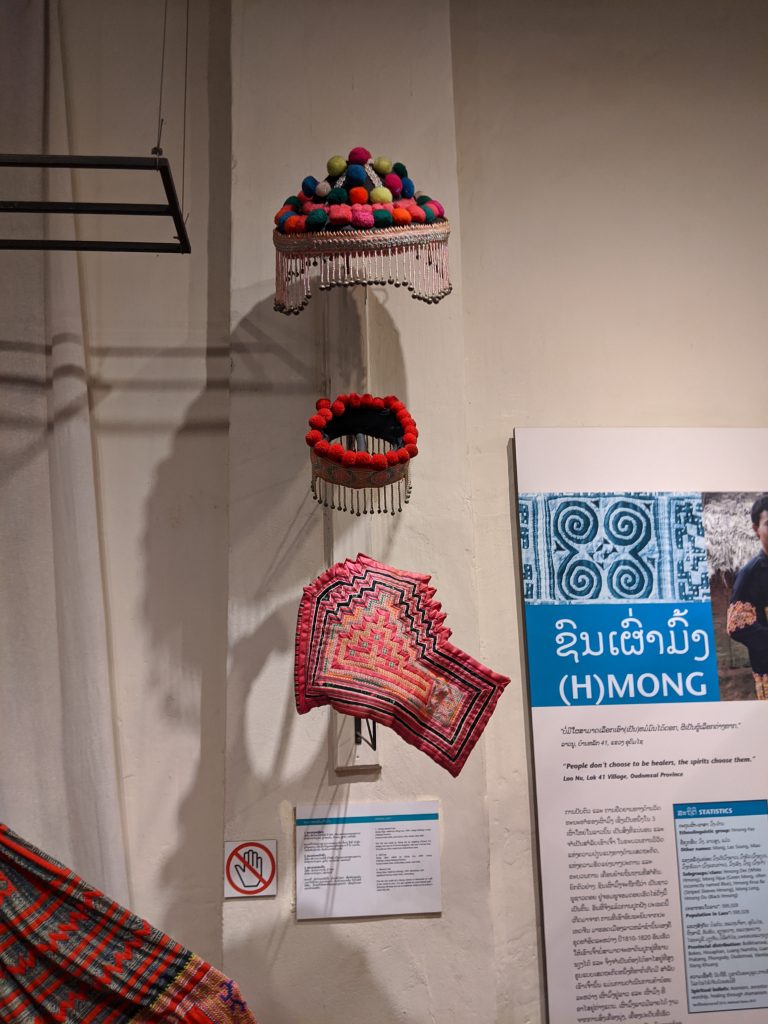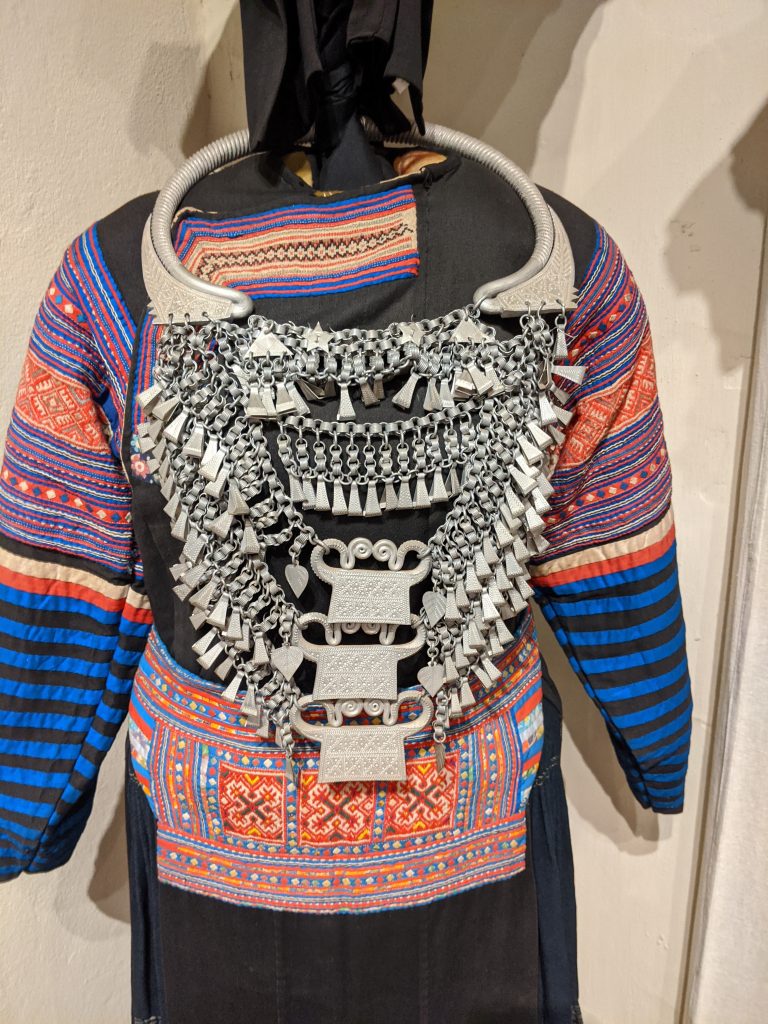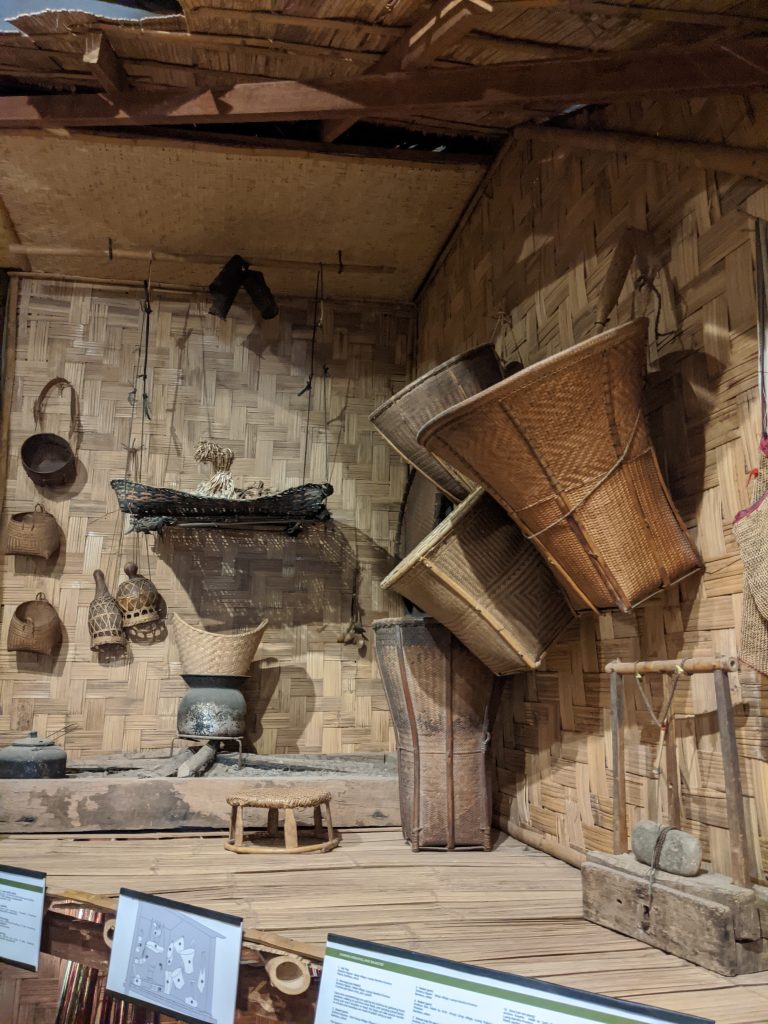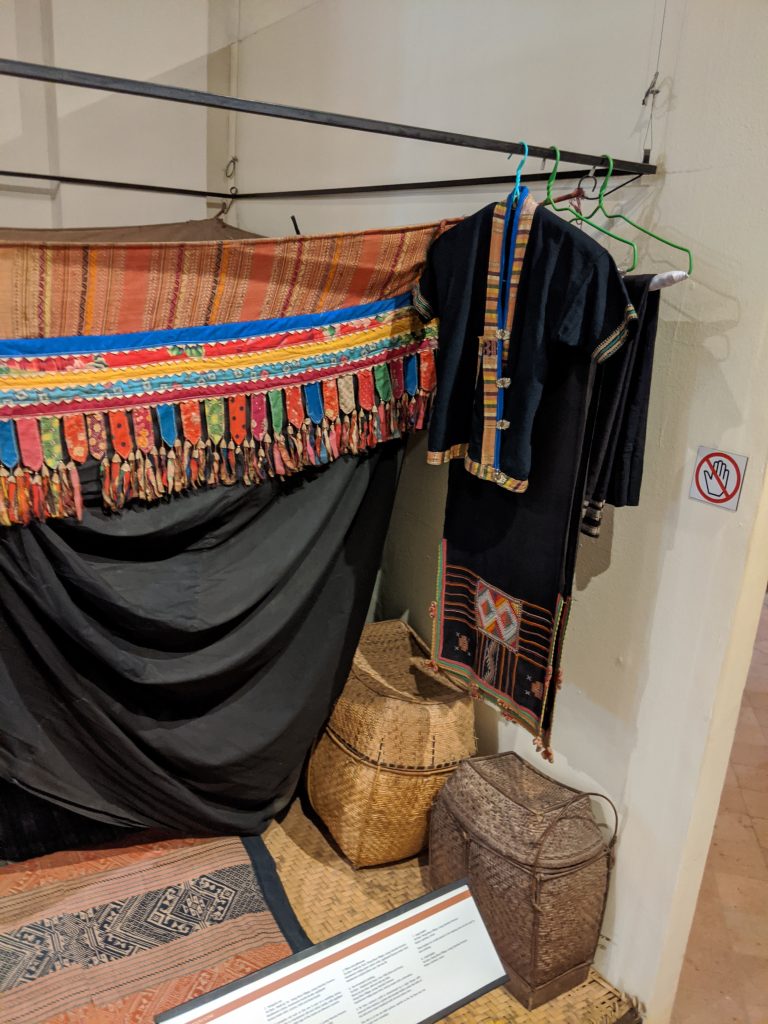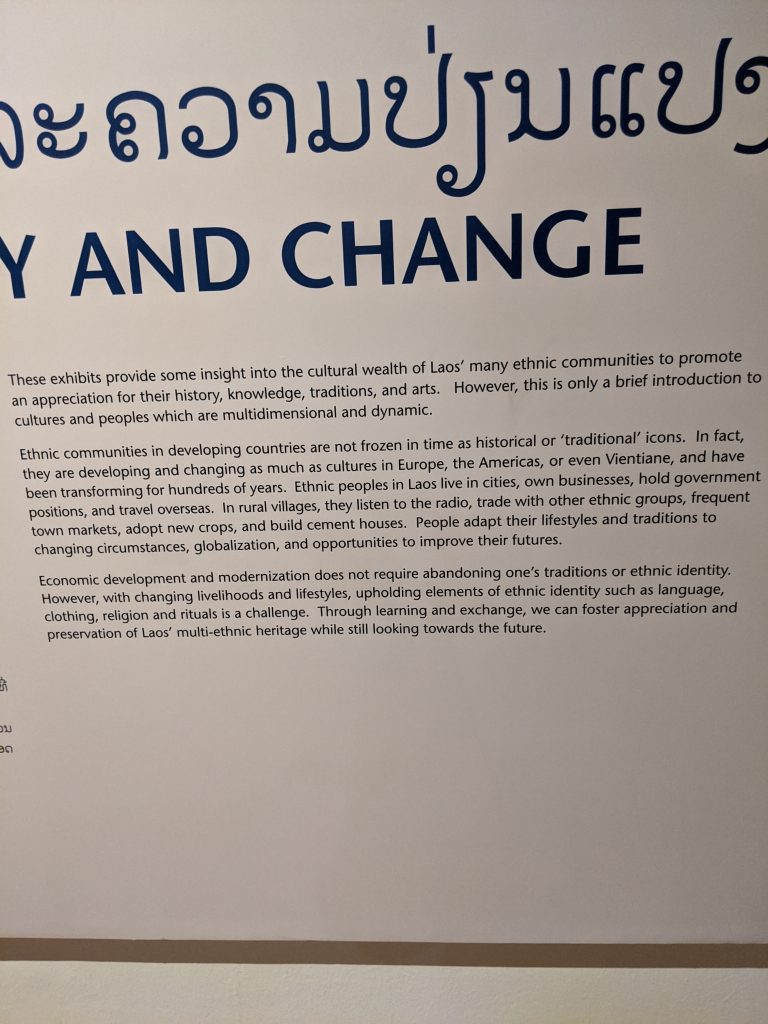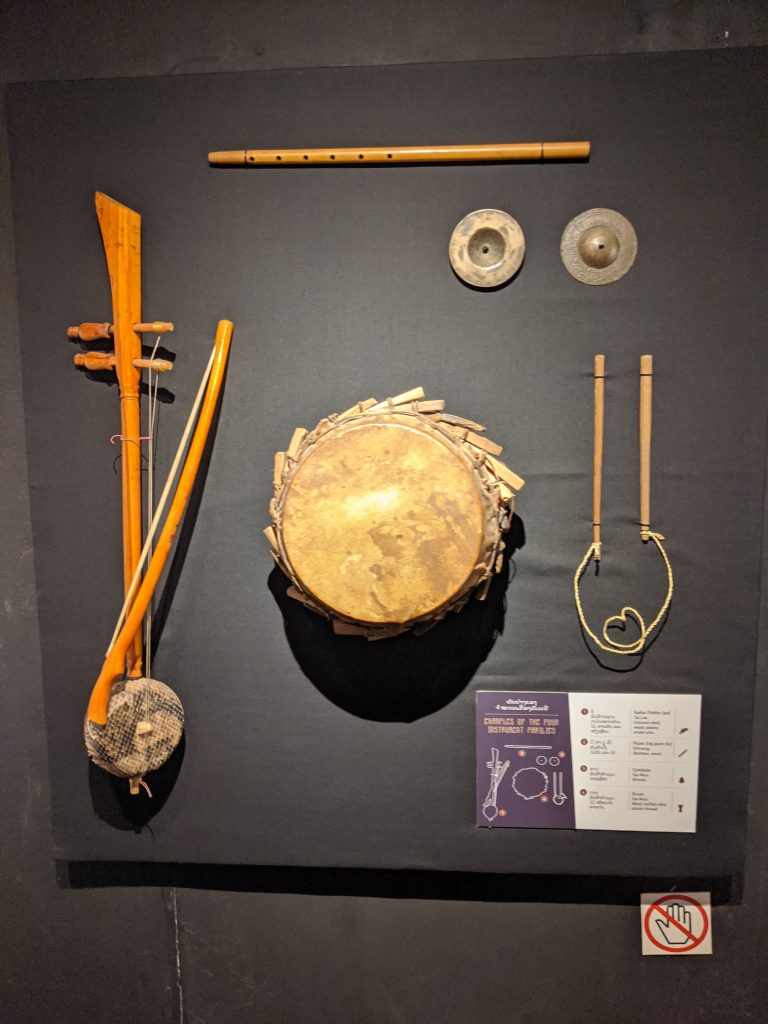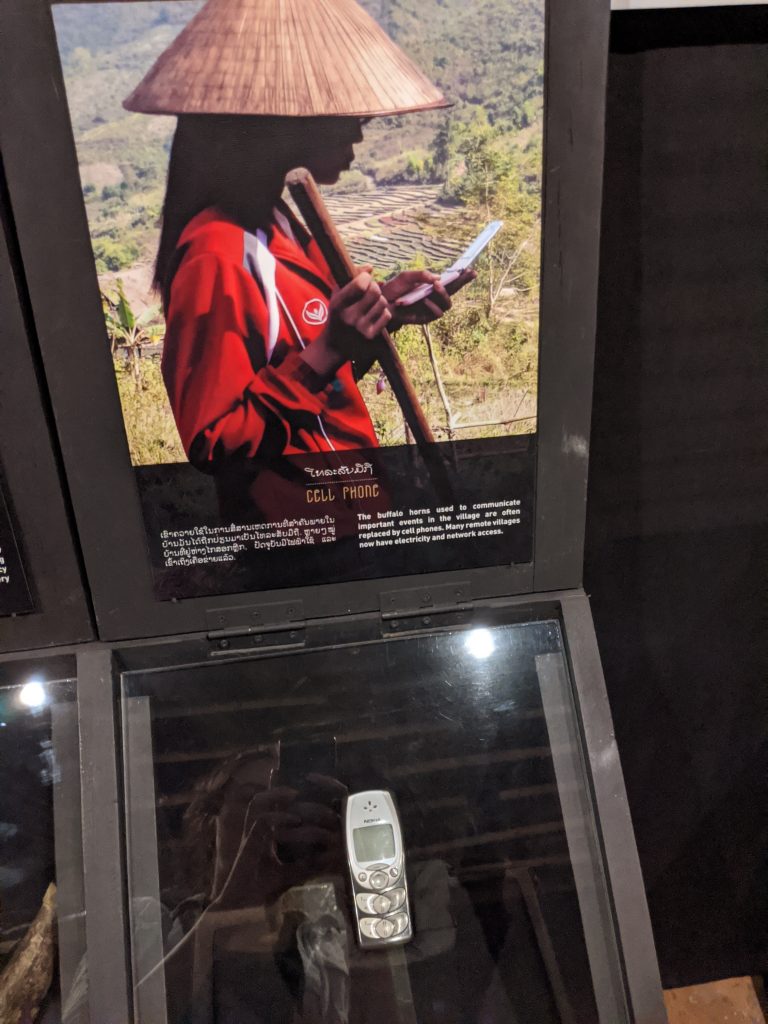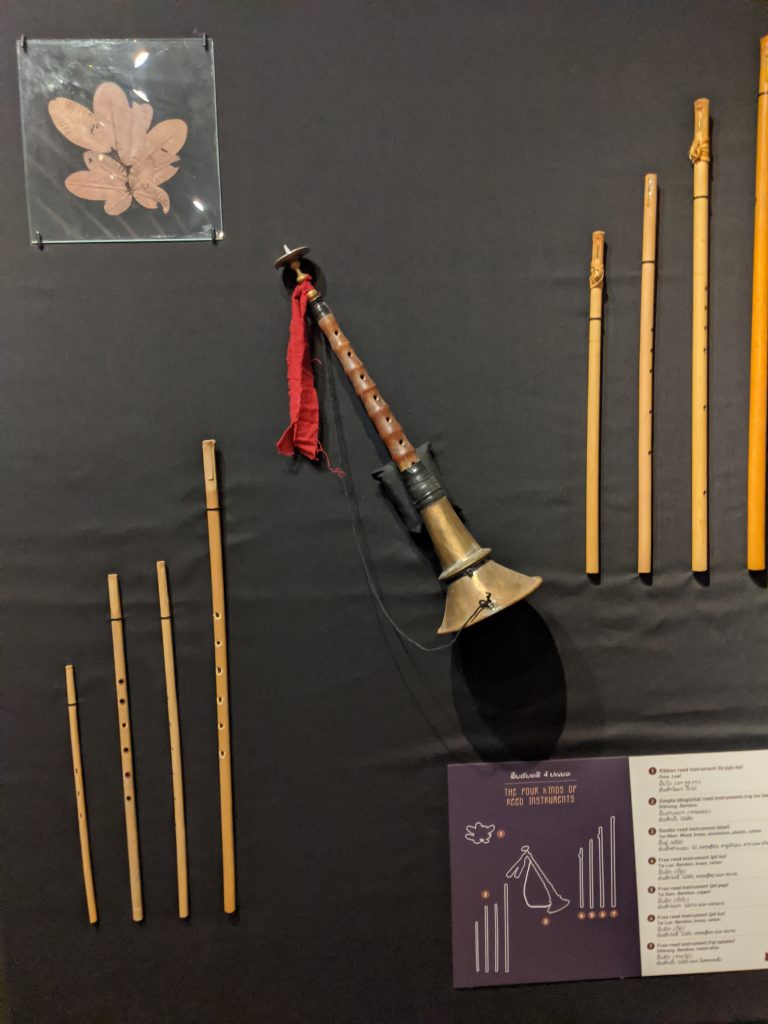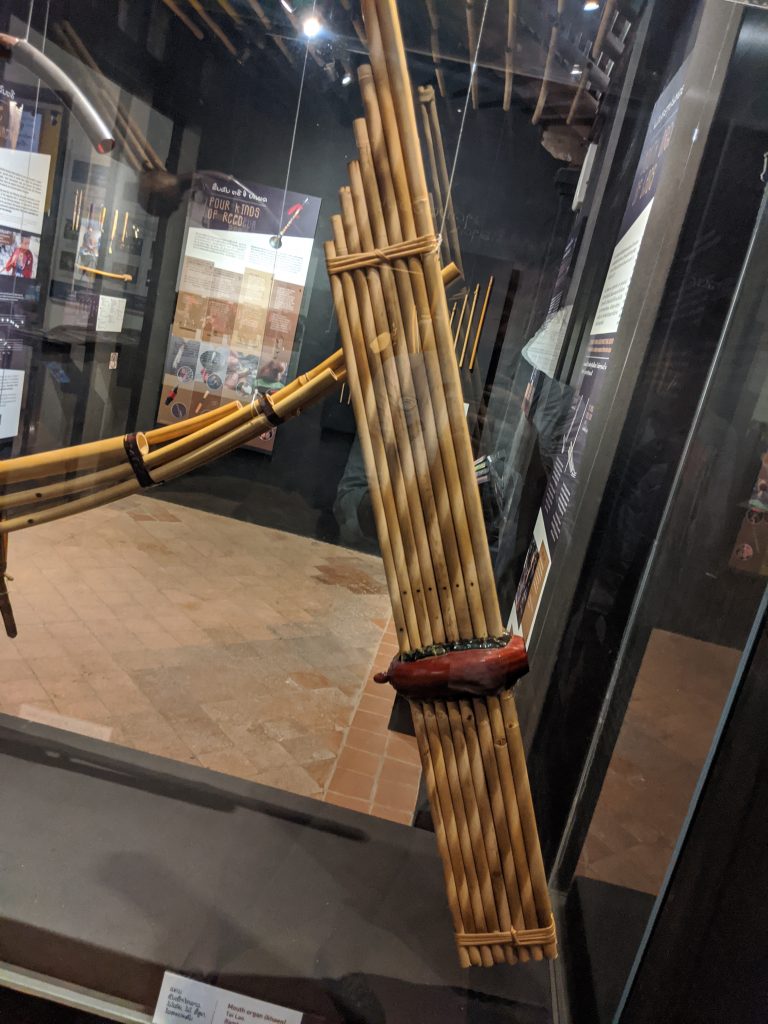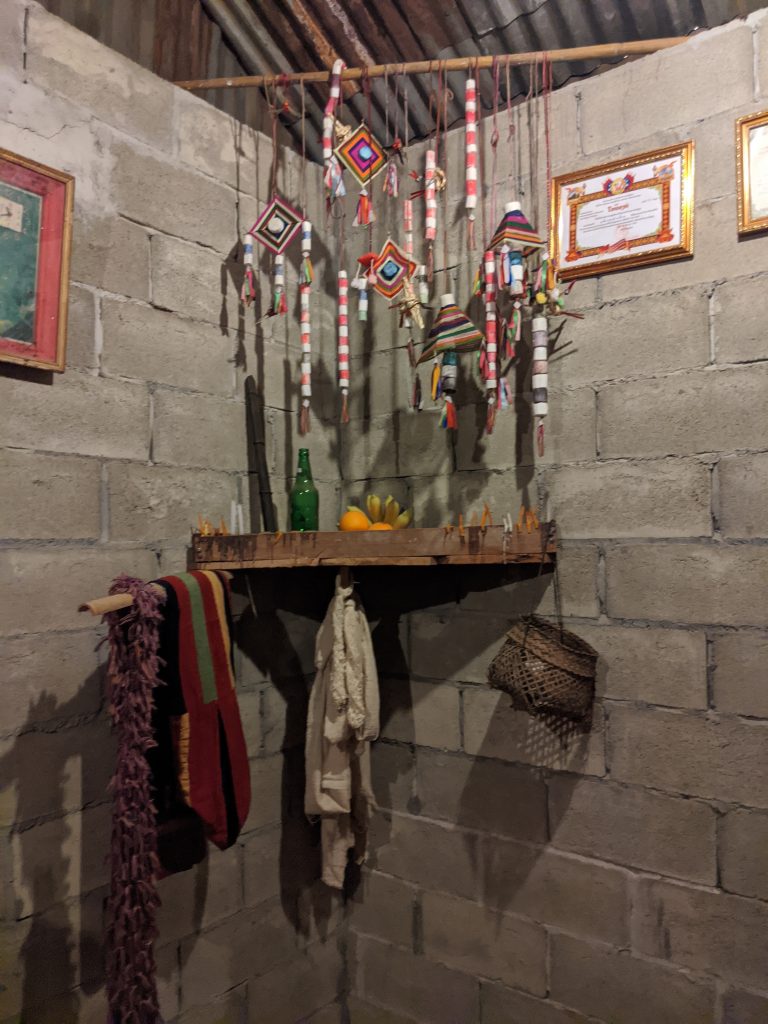Luang Prabang, as well as much of Laos, is riddled with unexploded bombs from the Secret War. Laos is the most heavily bombed country per capita in the world. From 1964-1973, the US dropped the equivalent of a planeload of bombs every eight minutes for the entirety of the nine years. Over two hundred seventy million cluster bombs were dropped on Laos, and there are estimated to be eighty million undetonated bombs still around the country.
UXO, the Government’s National Unexploded Ordnance Program, has a museum in Luang Prabang that explains the work the country and its partners are doing to clear the country of bombs. Clearing the bombs is slow-going. Over the last twenty years, Laos has cleared hundreds of thousands of undetonated bombs, but that is a small number (less than 1%) of the eighty million that they have to clear. The bombs themselves present a strange and dangerous opportunity for locals. While illegal to harvest the bombs, the metal they are encased in is very valuable and can fetch up to two hundred fifty USD. As a result, many of the deaths in the country are as a result of a non-UXO local attempting to disarm a bomb on their own and accidentally triggering a detonation.
Outside of Laos’ main cities, bombs are a part of daily life. Children across the country are educated on what bombs look like and how to react in an event that they find one, unfortunately not a rare occurrence. The bombs are small and round, and to an unassuming child, look like something fun to play with. Almost half of the casualties each year due to the bombs are children.
I wish I had something more uplifting to say here, but the reality is at the rate things are going, it will be centuries until the land is cleared of these bombs. People have instead adapted their daily lives, but these undetonated bombs will continue to negatively impact the country’s ability to grow and recover for years to come.
On a lighter note, I rounded out my day at a different museum, the Traditional Arts and Ethnology Center. The center showcases various types of clothing, instruments, languages, and traditions of the varying ethnic groups throughout Laos. Even though Laos has one of the smallest populations in Southeast Asia, it is home to forty-seven ethnicities and eighty different languages. It is a culturally rich and diverse country, and I’m glad I was able to end my time here on a high note by getting a taste of what the country’s culture is about.
